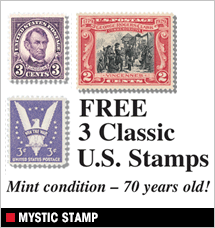
Arizona has long been famous for its sunshine, turquoise skies, cactus and dude ranches. Wickenburg, a city 50 miles west of Phoenix, gained the nickname “Dude Ranch Capital of the World,” while Scottsdale is known as “the town millionaires built.”
But in recent years the Grand Canyon State has become famous for something else that is attracting people from all over the United States as well as many parts of the world.
Poker. And it happens to be especially popular among retirees.
Arizona has casinos and poker rooms in all of its major cities, including Phoenix, Scottsdale and Tucson. Drive north to Prescott or Flagstaff, and you will find poker games on Indian reservations where tourists sit down to play against Native Americans, and action often goes on around the clock.
While the first casino was established in the U.S. around 1822 in New Orleans by a promoter named John David, Arizona has spread the game as far back as the early 1800s. Places like Tombstone, where Wyatt Earp served as sheriff, offered it to customers along with faro, roulette and other games of chance.
Today Indian reservations operate casinos like Talking Stick and Wild Horse Pass just outside Scottsdale and Chandler, Arizona. The casinos are always full with secretaries, attorneys, real estate salesmen, farmers and ranchers using their skills to try to “buck the tiger,” as one cowboy put it.
“Poker is the most popular card game in America,” said a dealer at Talking Stick. “And we certainly get our share of action here.”
Credit for the spread of poker's popularity must go to the under‑the‑table camera that made it possible for television audiences to be spectators as well as players. The Internet and Travel Channel added to the popularity of the game, showing players like Doyle Brunson, Phil Ivey, Johnny Chan, Amarillo Slim Preston, and others playing for pots that amounted to hundreds of thousands, and even millions of dollars.
Talking Stick Casino operates an exclusive golf course and is a popular attraction to professional baseball teams that spend their spring training near the casino. Wild horses often drift in from the open desert east of Scottsdale and can be seen by patrons as they valet park their cars.
The poker rooms offer added perks during major league baseball games, the Super Bowl, and basketball games by splashing money on poker tables when a home team scores. They also offer bad beat jackpots that can reach hundreds of thousands of dollars when high hands are beaten by a better hand.
Indian‑owned casinos employ thousands of people, many of them Native Americans. They share their profits with Indian families living on or near the reservation and provide scholarships as well as job opportunities and other benefits to those who are eligible.
While some smaller casinos only offer slot machines and table games, the bigger ones provide poker. Other Arizona casinos include Twin Arrows Navajo Casino near Flagstaff, Desert Diamond Casino in Tucson, Vee Quiva at Laveen, and Cliff Castle near Camp Verde.
An Indian dealer joked, “Maybe we couldn't beat the United States Cavalry in the Indian wars, but we are doing much better with our casinos. Let the games begin.”
Geno Lawrenzi, Jr. is an international journalist, magazine author, ghostwriter and poker player who lives in Phoenix, Arizona. His email address for your comments and story ideas is This email address is being protected from spambots. You need JavaScript enabled to view it. .














































































